Build a Miter Sled for Picture Frames
Get accurate miters every time with this custom tablesaw sled.
Videos in the Series
-
How to Build Your Own Custom Picture FramesAugust 7, 2012
-
Build a Miter Sled for Picture FramesAugust 7, 2012
-
Make Two Picture-Frames with a RouterAugust 7, 2012
-
How to Glue and Clamp a Picture FrameAugust 7, 2012
-
How to Mount Art in a Picture FrameAugust 7, 2012
-
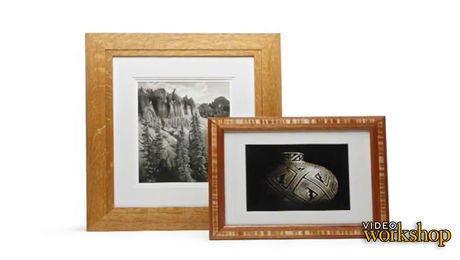 Recommended resources: Building Custom Picture FramesJune 18, 2020
Recommended resources: Building Custom Picture FramesJune 18, 2020
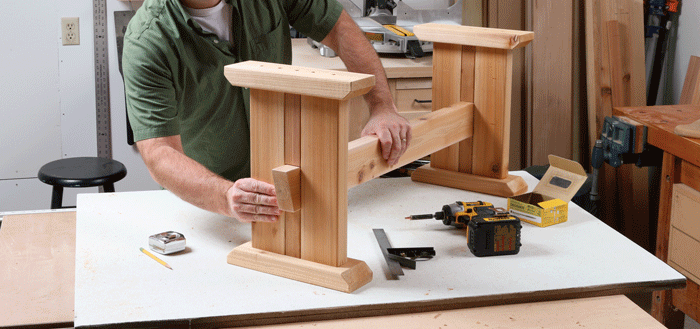

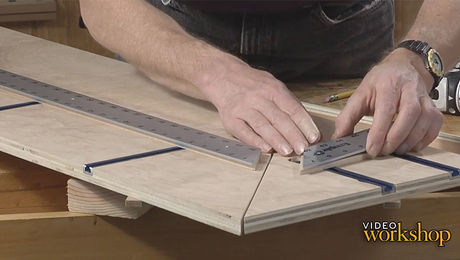
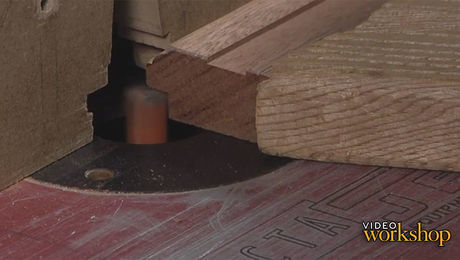
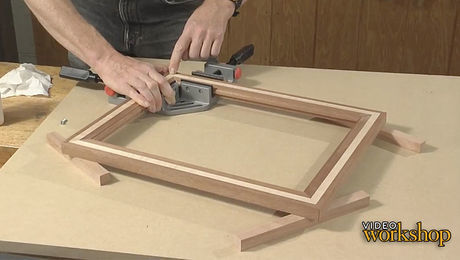
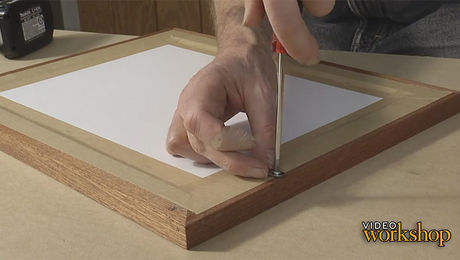






Comments
Mark refers to plans for the picture frame sled in the fine woodworking magazine but doesn't tell which magazine he is referring to. This information is necessary to get the dimensions.
@user-6447716, how about this one? http://images.taunton.com/downloads/FW1124-PictureFraming.pdf
I found it with a simple search.
Plans? What plans. He mentions referring to the plans at the beginning of the video. But aside from the article by Robert Harmon, there are no specific plans. It's easy to figure out without them, but some actual drawings would be helpful.
The plans are available on the video workshop landing page here: https://www.finewoodworking.com/videoworkshop/2012/08/building-custom-picture-frames
The original link just sends you back to the homepage for the frames, no plans there
I also managed to locate the original article, with the plans, in a back issue: FWW #176, April 2005. But Dave's PDF link works perfectly as well.
The 5 cut method ensures that a regular table saw sled is a precision instrument. I'm sorry but I fail to see such an effort to ensure this sled is as exacting. A layout on the base which guides the attachment of runners does not guarantee accuracy to within a few thousandths of an inch. There's also more to the accuracy of picture frames than the jig.--for example, table saw set-up and blade choice. ...But considering the jig itself, there are other, more accurate, picture frame jigs that one can build that are based upon the common table saw sled.
@Suburbanguy,
As long as the pair of fences makes a perfect 90, and as long as both sides of the joint are cut using both sides of the fence, the joint will be tight, even if it's a few cents of a degree off 45.
I didn't do all that layout. I built it similar to the way I would a normal sled, by laying the runners in the tracks, flushed up to the table with pennies; laying the sled on top, lining it up, and connecting the two. Normally, I'd put glue on the runners first, but I wasn't confident I could place the sled anywhere near accurately on the first 'drop', without smearing a bunch of glue. So, I screwed from the top, flipped over, marked the runners, removed the screws, added glue, and re-screwed into the same holes, to clamp it, watching the runner placement against the marks.
I didn't think of it until reading your post, but I don't see why you couldn't rough in the long fence placement, and do a version of the five-cut, before attaching the back end of the fence permanently. I can think of two ways... First, use that 45 block against the fence, so the test cut piece presents square to the blade, and do the five cuts. Or... start with a square test piece, use no extra block, and make nine cuts. I'd have to think about that, what to do with the result... but it should be possible.
I will second the comments about finding the "plans"--there are none at the links various persons posted! There is a problem in these comments about the definition of "plans". What is needed is "dimensioned drawings" in plan, elevation and section, not just a few pictures with some thicknesses discussed. If there are any "real plans", I have not found them anywhere--including the links that have been posted. "Plans" are not pictures, they are drawings that show the dimensions of what is to be constructed. For instance, where are the "dimensions" for the base of the sled? I found these nowhere. For those of us with engineering, architectural and tech backgrounds, plans are NOT casual descriptions with some photos--those are just "illustrations". There is a difference and thus the confusion here, I think.
Since there's enough information in the article to build one, it wouldn't be difficult to create full blown plans based on the information in the article. I just spent about 3 minutes and made a Sketchup model of it. Plans would be straightforward from there.
Yep, I made one (both Sketchup and reality). There was enough information.
"For those of us with engineering, architectural and tech backgrounds..."
I'd think it would be even easier for you, then, as I have no training.
Yeah, I agree with you both. Can do it in AutoCad easily, but my point was an effort to try and solve the apparent conflict in the statements made in comments prior to mine, and only that, that point being that folks with different kinds of backgrounds have different expectations when referring to "drawings" and "plans" and the like. I was just peace making, that's all.
Having just viewed the video series one of the important elements is a rule that is quite thick that I estimate at between .187" and .250". Where can I find one of these rules?
I bought a rule at home depot. Aluminum. Cheap.
Having viewed this design carefully, I am not sure about its ease of use. The 14" x 46" base overhangs the front of my table saw significantly and awkwardly when oriented at a 45 degree angle to the saw blade and in front of it. You almost need an "infeed" table to use it without fighting with it, I would think, so when I explored this design I elected to look for one that is better. Perhaps some have more table space between the blade center and the infeed side of the saw. The distance on mine is 16 inches and the distance to the back of the base when turned with its front corner at 45 degrees in the front of the blade is over 36", thus the weight of the overhanging portion that is unsupported creates a moment about the infeed table edge that rotates the entire sled upwards when using it unless it is pushed down in front by the user--awkward. This can be solved by "front weighting" the entire sled, but I didn't like that idea either. I've never seen an "infeed" table used. Are they common?
OK, so I thought the above was unclear, so I tried to illustrate. First of all let me say that the 24x48" piece of melamine in my photos is just that--I didn't want to cut it to size just to illustrate my point; however, the gold t-square is laid on it so that the space between its (Lets get this straight first--all left and rights I will state are as if looking from the front side of the saw, that is to say the normal side from which you feed it. In my pictures the outfall table is NOT on the front of the saw--it is on the back! OK, now!) So, the space on the melamine cut is 14" to the right of the edge of the gold t-square that runs the long length of the piece. The design length is 46". I don't know why not 48" (since that is what most plywood, etc. is on its lesser dimension), but OK, so its two inches longer than the plan, so, if it bothers you, imagine it is not there. So essentially speaking, the part of the melamine that is exposed to the right of the gold t-square's long leg is the size of the sled as proposed (2" imagined not there). So, note that I put in a long rule (aluminum silver color as per the project, but not cut.) IT is laid PERPENDICULAR TO the machine direction and parallel to the blade. I used a runner of plastic to show the triangle to show that I positioned the melamine so that it would be pretty much where it would be when beginning a frame cut by sliding it in the machine direction (front to back) on the attached runners beneath it. Note the overhang! I supported that portion of the melamine on a roller stand just to hold it there to take these shots, and in truth, I guess one could use such a stand to use the sled, but it is not mentioned in the videos. Hopefully this is now clear as mud? Note that if it is 14" from the center of my saw blade to the front edge of the table that the overhang when so positioned (See Image 3485) is (reading on the silver aluminum rule) approximately 42" to the back of the sled at apron. 46" on the sled (gold t-square), thus the table overhang at the front side of the saw table is 42"-14"= 28". If one assumes uniform weight per unit of area in the sled, then obviously the weight of the overhang exceeds the weight of the portion that is on the saw table thus creating a moment about the front table edge that will tend to raise the sled during the first part of any cuts. I rest my case having done my best to explain. Perhaps I have missed something, but I think this situation exists EVEN IF one cuts off that triangular portion that is not needed at the back of the sled on it's left side.
One more revision or caveat, and that is that I did NOT want to install the shims in the t-groves in my saw top that is done in the video, i.e. what he calls a scrap of aluminum attached to the bottom of his quarter sawed runners to act as a hold down. I would say that if you use a light grade of ¾" plywood, this would probably hold the sled level with the saw top when pulled all the way out, but I wanted to use 1st Melamine because of its stability and 2.) a good grade of plywood without internal layers of "styrofoam" or other such to make it cheaper or lighter. I am now wondering if I could just make this out of a similar sized sheet of ⅛"thick aluminum plate (sheet? never can remember where plate ends and sheet begins, but ⅛" is all that is needed).
The concerns raised by "user-6764105" about the sled tipping of the front of table saw are very real. This is a problem with crosscut sleds and even more of a problem with miter sleds, especially of the type shown in the FWW video.
For my miter sled I incorporated the clever aluminum ruler feature shown in the video, but in a conventional format miter sled. The rulers were implemented as auxiliary fences, so they can be removed when they are getting in the way of normal use miter sled. See photo, and link to video on how to make one: https://youtu.be/yJbVyA8rqYA
I also made a clip-on infeed support that stops the sled from tipping off the table but still allows my body to come right up to the front to table saw. Photo below, and here is a link to video showing how to make one: https://youtu.be/pp-9-CZes2I
I've been using something similar but smaller for years. To solve the counter weight problem I place a 5 pound weight on a dowel and also upgraded to slides from microjig. Here's a link to my blog about, it doesn't show the weight -- didn't know I needed that so it's retrofit! https://wordpress.com/post/woodworksbyjohn.com/3380
Log in or create an account to post a comment.
Sign up Log in